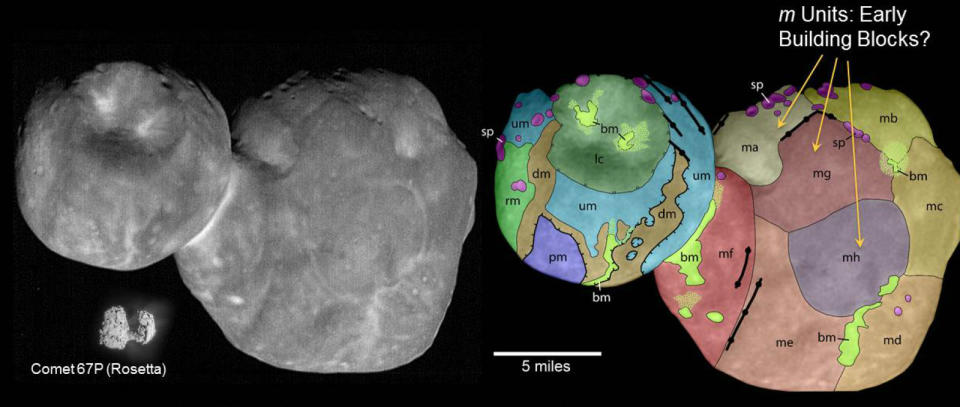Ultima Thule is unlike anything we’ve seen in the solar system
It has scientists questioning how the building blocks of planets form.
It turns out Ultima Thule is a kind of lumpy space snowman. If you've been following NASA's New Horizons spacecraft, you know Ultima Thule is an object in Kuiper Belt, the donut-shaped region of icy bodies beyond Pluto. New Horizons made the farthest flyby in human history when it passed Ultima Thule on New Year's Day. As data from New Horizons makes its way back to Earth, scientists are beginning to analyze the data it collected, and they're making surprising discoveries.
We knew Ultima Thule was once two separate bodies that orbited around each other. But the new data shows they joined slowly, in what appears to have been a peaceful merger. Neither object was seriously damaged.
Scientists are especially surprised by the shape of the object. What looks like the body of a snowman is a large, flat lobe. The head is a smaller, round lobe. It's unlike anything scientists have seen before. New Horizons Principal Investigator Alan Stern said, "It is sending the planetary science community back to the drawing board to understand how planetesimals -- the building blocks of planets -- form."
Ultima Thule is also strikingly red -- more so than Pluto. And it has a variety of surface features from rolling hills to troughs, pits and bright and dark areas. There's also evidence of methanol, ice and organic molecules on the surface. These discoveries open up all kinds of questions, and we can expect even more when New Horizons' data finishes being beamed home in the summer of 2020.
Correction, 3/20/19, 9:00AM ET: This post has been updated to note that New Horizons itself won't be home in summer 2020 -- that's just when its data will finish being sent home. Additionally, this post originally stated that New Horizons had circled Ultima Thule; in fact it passed it. We apologize for the error.


